Heading West (Part I, Page 2)
September 20th - 27th, 2023
The Lincoln La Paz Trinitite Collection
Also: Tombstone, The Petrified Forest and
DoBell Ranch Petrified Wood.
|
I continued on through Arizona and into California. It was amazing how the landscape seemed to change from one state to the next. My plan was to get close to where Harry lived, and have a short drive to his house the next morning. I decided to stop in La Mesa. |
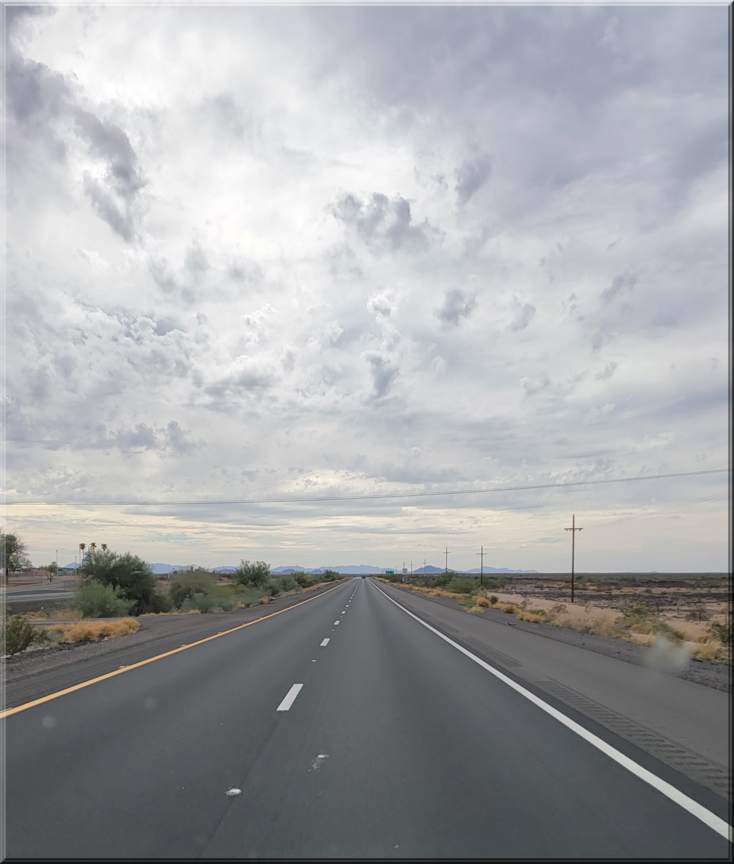 |
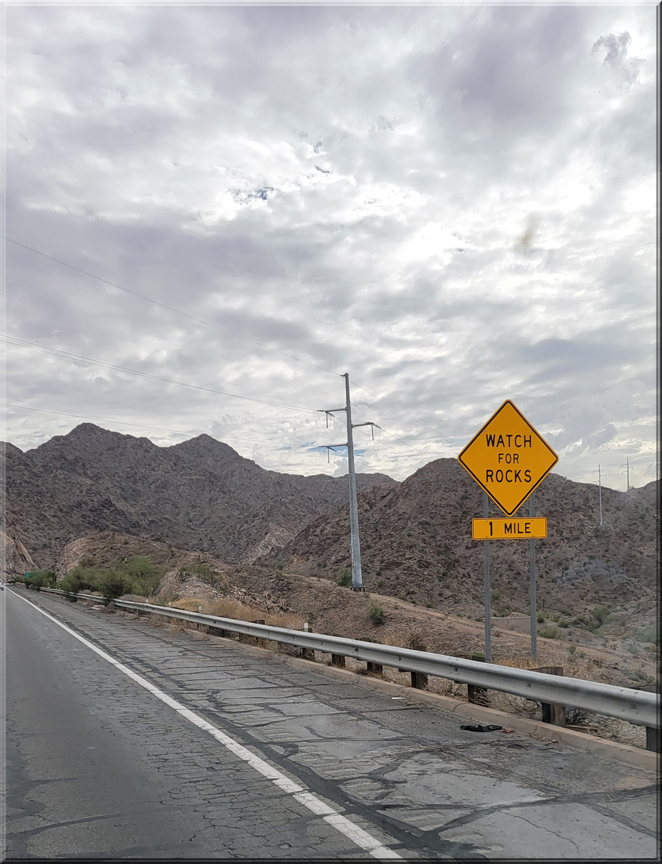 |
I made it to La Mesa around 10pm that night. I found a Wal-Mart and did my usual sleep in the van routine. About an hour after parking, I got a knock on the window. An employee who worked there advised me that I should probably not sleep there at night. He pointed across the parking lot to a small car with crime scene tape wrapped around it. He told me a man and his girlfriend were beaten to death a couple of nights before by local gang members. He said I should park behind the building, you know, where there are no lights. I thought it was funny he was so concerned for me, but didn't seem to care about the homeless tent encampment surrounding the outer edges of the store on the grass. I guess gang bangers don't like beating homeless people?
I drove a little further down the road and found a place to park for the night. One with no crime scenes or homeless camps.
|
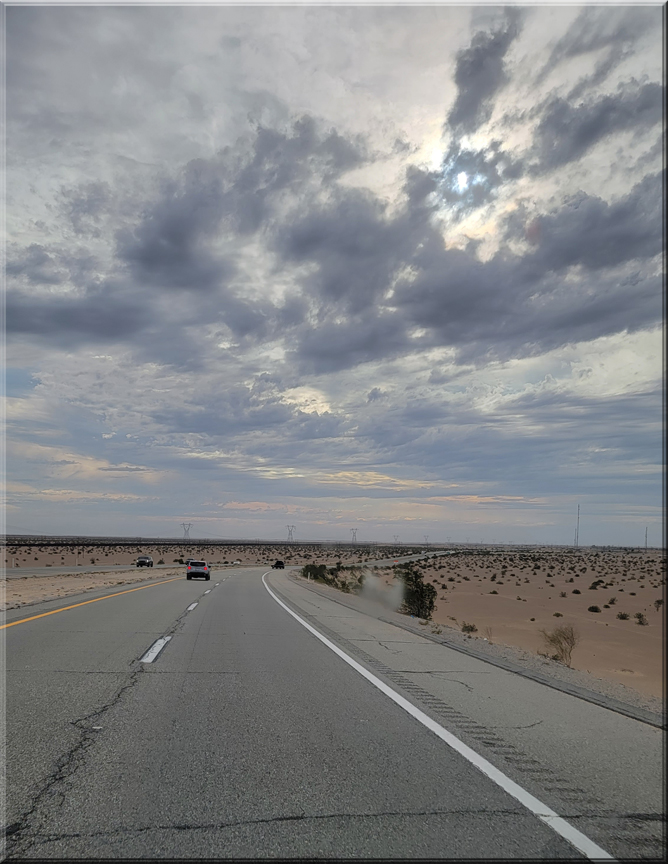 |
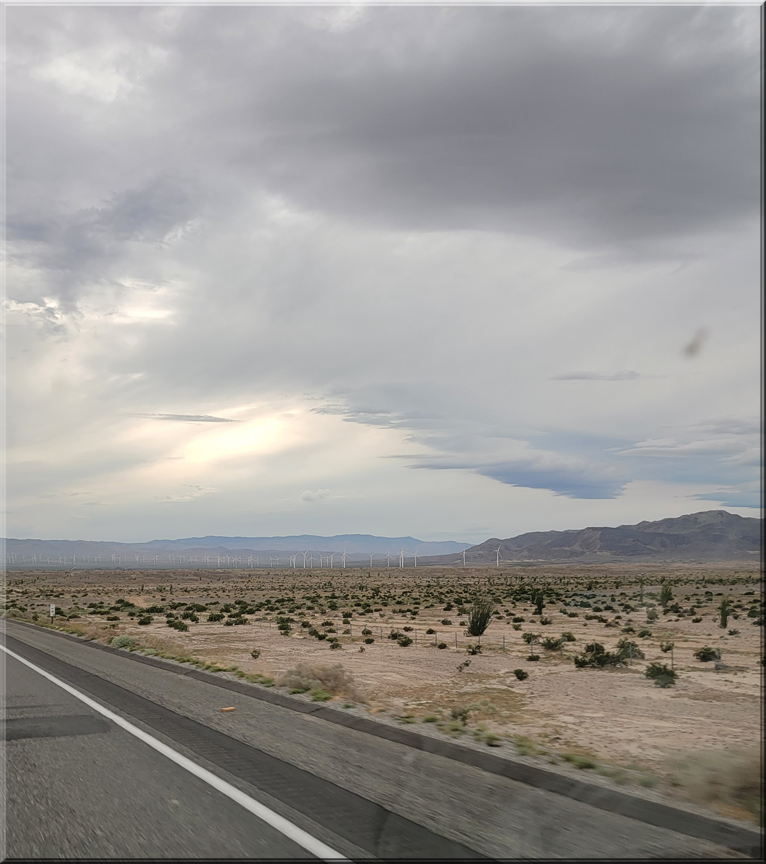 |
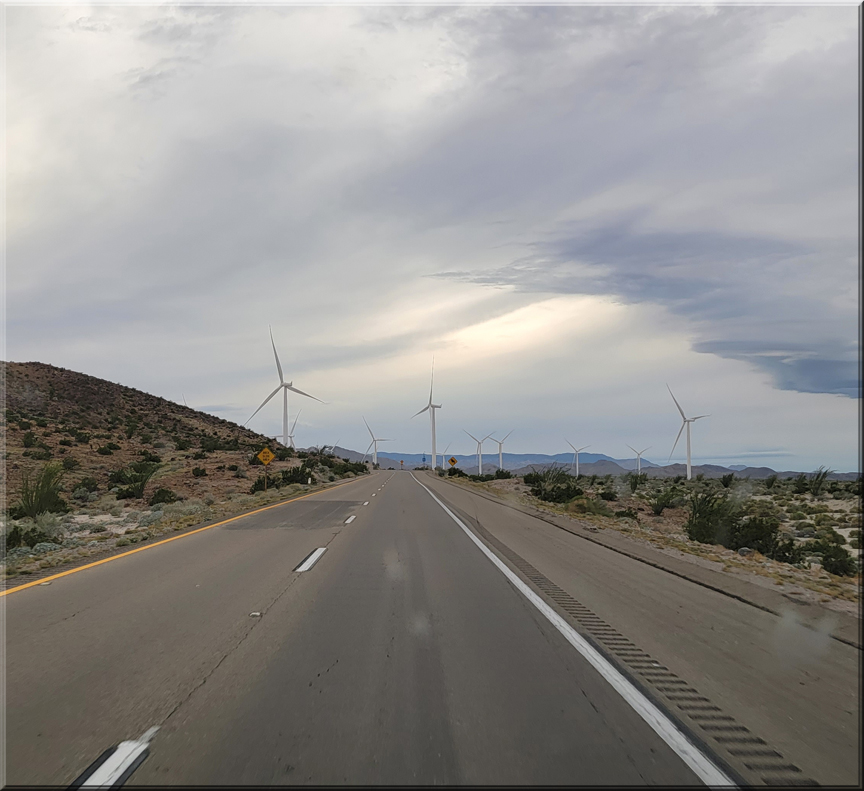 |
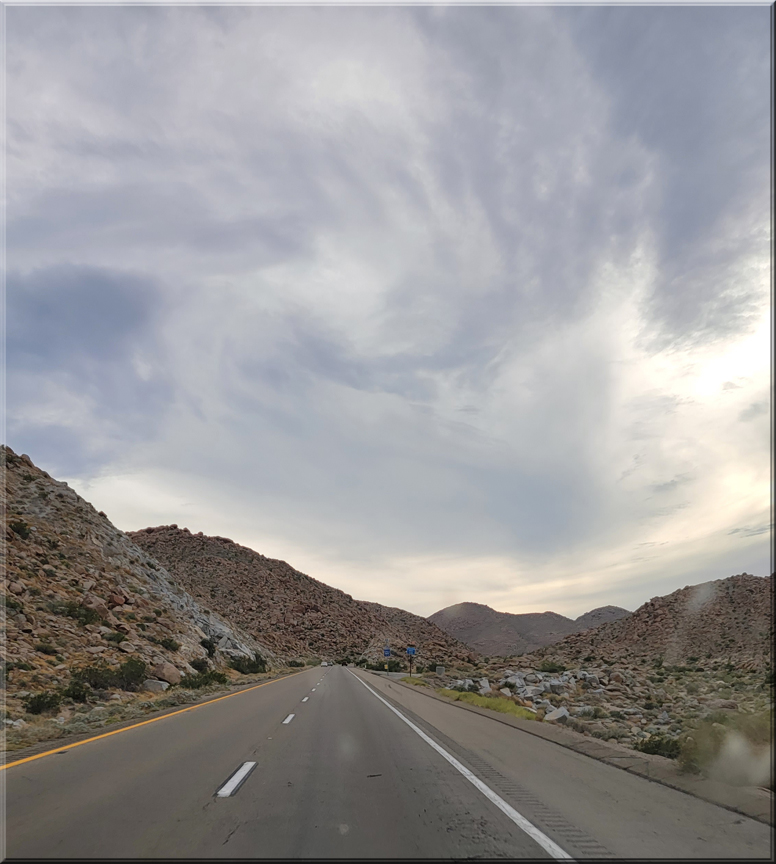 |
I was up early the next morning and headed to Harry's. I was there within an hour or so. We spent the morning just talking about rocks and trinitite. Harry and his wife, Mary, are as nice a couple as any people I have ever met. We talked about the La Paz collection and Harry told me a lot about the family history. |
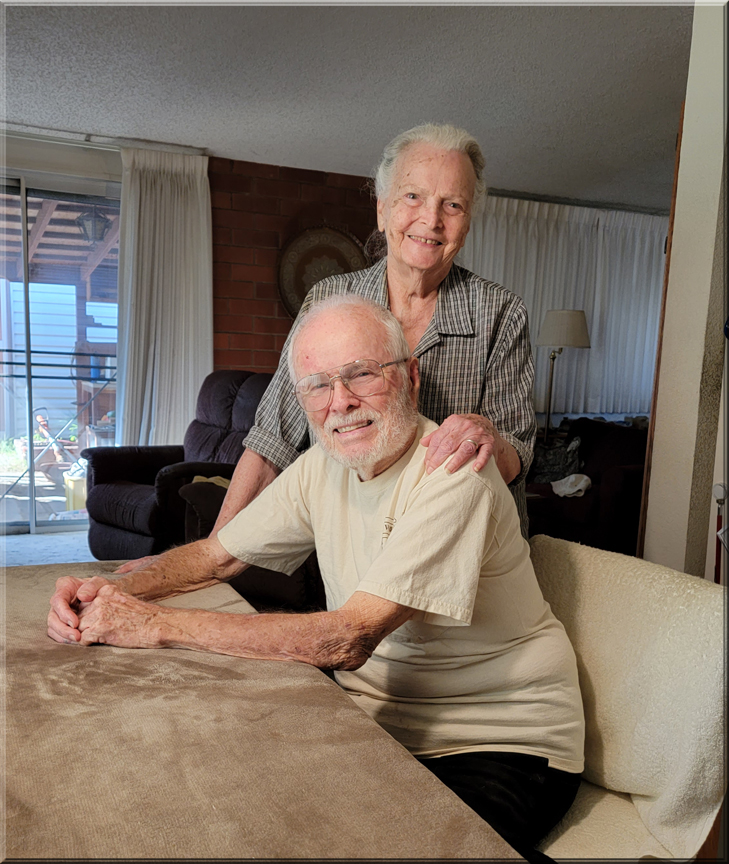 |
Mary is the youngest of Lincoln La Paz's two daughters. Her older sister, Jean, had passed away several years earlier.
La Paz was a well known astronomer and a pioneer in the study of meteors and meteorites. He was a Harvard graduate in the 1920s and worked at Ohio State University in the 1930s and early 1940s. He also worked at the 'Missing Meteorite Bureau' at Ohio State. I do not know if this is something he created at the university or a unit he worked in. I found some letters/correspondence between La Paz and a tektite hunter in Texas dated back to 1942. Those letters will be posted in Part III of my report. In 1945, he went to work at the New Mexico Proving Ground as a Research Mathematician and Technical Director, Operations Analysis Section for the Second Air Force. He founded the Institute of Meteoritics at the University of New Mexico in 1945 and was Director of the Institute until 1966. Between 1945 and 1953 La Paz was Head of the Department of Mathematics and Astronomy. From 1953 to 1962, he served as Director of the Division of Astronomy at the university.
It was the University of New Mexico where Harry met Lincoln La Paz. Harry was his student in mathematics. It was also around that time that Harry met La Paz's daughter, Mary, and later married her.
Harry told me many great stories of hunting for meteorites with his father-in-law. He also told me that Lincoln was at the Trinity site very early on after the testing was completed on July 16th, 1945. La Paz told Harry, "I picked up a lot of that Red." He also picked up a lot of the largest green I have ever seen!
La Paz was one of the first to study the Norton meteorite when is was observed landing on the Kansas/Nebraska border in 1948. He oversaw the one ton meteorite moved to a permanent display at the University of New Mexico. You can learn a lot more about Lincoln La Paz with a simple Google search, or a visit here: Lincoln La Paz - Wikipedia
We began going through the trinitite and meteorites. For me, it was one of the coolest things I have ever had the opportunity to do. To be able to handle and study the finest collection of these historical pieces was just unbelievable. And to be able to purchase some of them was a dream come true!
|
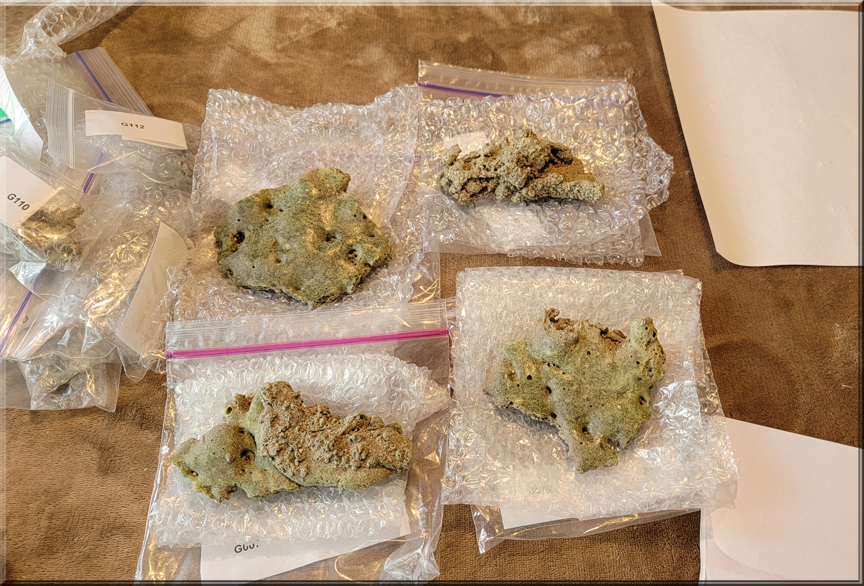 |
Very large trinitite specimens ranging in size from 81 grams to 138.5 grams. NFS. I purchased these along with numerous smaller specimens on this visit. But these were not the largest in the collection, I got those on a subsequent trip which will be detailed later. |
At the time of my visit, I was focused strictly on the trinitite. So when Harry brought a small portion of his meteorite collection out, I enjoyed looking through it, but did not think about acquiring it. I definitely like meteorites, but trinitite was what I came for, so I did not make any offer for the meteorites. That kept me up at night for over a year. I can happily say that I sleep very well now. That is also another story that you will read soon. |
3,291 gram Odessa, Texas meteorite. Collected by Lincoln, Mary and Jean La Paz. 1937-1939. Collected from the Odessa Meteor Crater in Texas. |
Harry weighing specimens, calculating numbers and coming up with prices for a big pile of trinitite! |
One of my favorites from this trip, and maybe my favorite in my trinitite collection. This 138.5 gram specimen is a textbook example of trinitite. It has the classic smooth glassy green top surface and the bottom is a rough, ropy sandy texture where it lay on the desert floor after the blast. Not the biggest in my collection, but probably the best example. NFS. |
A couple more killer pieces. 96.2 grams (top) 81.6 grams (bottom) NFS. |
A few of the smaller reds from the collection. |
After a few hours of dealing, and me spending a lot of time wrapping and securing dozens of specimens for the long trip home, Harry and Mary made some awesome home made chili for dinner. Then we had a few 'Black Russians' to celebrate our great deal and our growing friendship!
The next morning, we said our goodbyes and I was on the road again. Back through California, over the mountains into Arizona and then north towards my next stop, The Petrified Forest in Holbrook.
|
Maricopa Road. This road leads to a place where they used to make the prisoners sleep in tents in the desert and wear pink prison jump suits. What a magical place it must have been. Where justice was properly served and repeat offenders were very few. |
Home
|